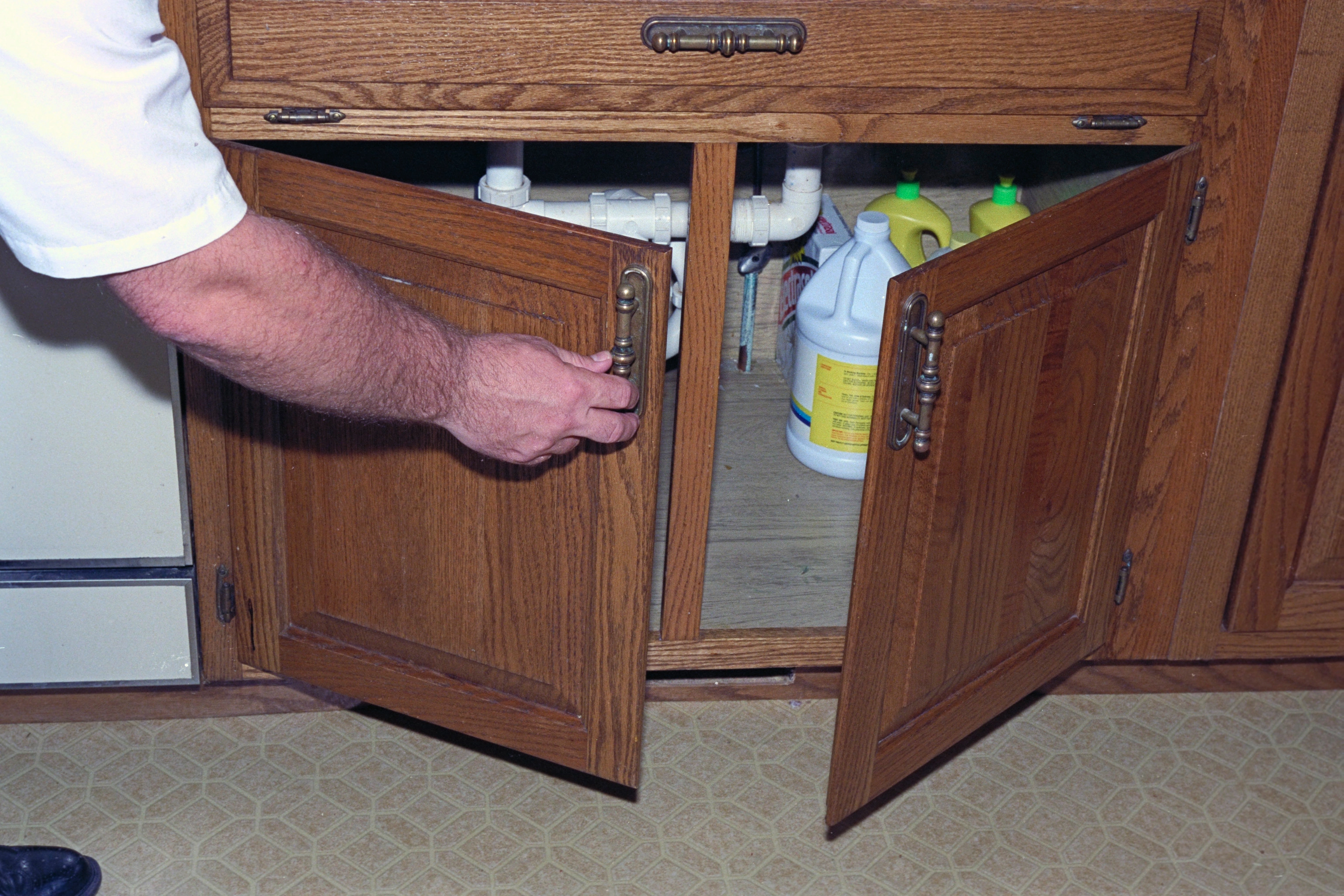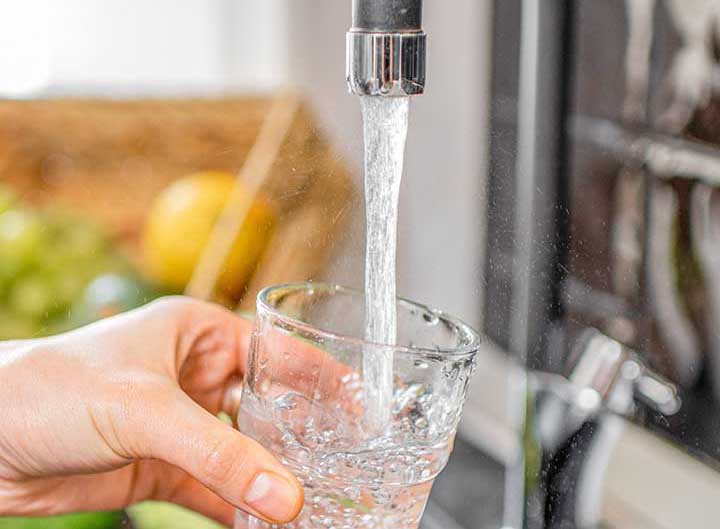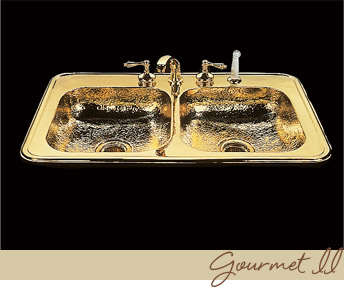We’re going to be talking about an all-too-common issue that many homeowners face. Kitchen sinks with clogged pipes and how to unclog them.
Understanding how to unclog the kitchen sink plays an integral part in sink maintenance and upkeep. If you can figure out how to unclog the kitchen sink on your own, then you’ll be saving money. Especially if you’re someone like me who doesn’t know much about working pipes.
What Causes Clogging

Begin by identifying the common causes of clogged sinks. Decide what you should and shouldn’t be throwing down the sink drain. Potato peels and other food waste will plug up kitchen sinks.
Hair can clog the bathroom sink very easily. Regardless of the obstruction, you use the same technique to unclog both kinds of sinks.
Mad Scientist Method

We’ll be addressing how to unclog a grease clog in the kitchen sink. This method also works in bathroom plumbing systems. Grease clogs happen if someone unknowingly poured bacon grease down the kitchen sink. Don’t do this, as it might solidify in the line and potentially cause major issues.
First, remove all of the water from the sink basin. Second, pour one cup of baking soda into the clogged drain pipes. Then, pour an equal amount of baking soda (8 fl. oz of vinegar) down the drain.
Let the vinegar and baking soda sit overnight. Refrain from running the faucet or using the sink in any way during this stage.
The combination of vinegar and baking soda immediately begins to release grease-fighting carbon dioxide gases. That’s what you will see bubbling up to the drain opening. Sometimes this DIY remedy resolves the issue of a clogged drain. If the foreign object doesn’t clear from the chemical reaction, the next step is to resort to a drain cleaner.
Drain Cleaners

Chemical Drain Cleaners
Drain cleaners containing chemical substances are usually sold as liquids, however, powders and gels are also available. Chemical drain cleaners work by mixing different chemical compounds to trigger a reaction. There are three general kinds of chemical drain openers/cleaners:
Acid drain cleaners
Usually contain a high concentration of sulfuric acid or hydrochloric acid. It is unlikely you will find these types of products at the store, you must purchase them locally from plumbers.
This kind of drain cleaner produces heat by means of chemical reaction to clear a path for the flow of water. They work really well, almost too well. One problem is that over time, acid drain cleaners can eat away at your pipes. Acid drain cleaners might lead to corrosion over time if used improperly.
Caustic drain cleaners
Contain either one of two powerful alkaline chemicals; lye or potash. Caustic drain cleaners emit heat from the chemical reaction while expelling a soap-like substance that dissolves food and organic waste.
Oxidizing drain cleaners
Contain bleach, peroxide, and nitrates. Upon use of these kinds of drain cleaners, the organic material of the clog loses mass and oxidizes. While also producing heat from the chemical reaction which then disintegrates any food waste or organic materials present in the line.
As I’m sure you’re aware, handling these products increase the chance of skin contact and exposure to harmful chemicals. It’s very important to wear protective clothing when using them.
Enzymatic Drain Cleaners
Enzymatic drain cleaners are much more forgiving than harsh chemical drain cleaners. What is great about enzymatic drain cleaners is that they contain some kind of bacteria culture and concentrated enzymes that obliterate organic material. It’s about as trustworthy as the vinegar and baking soda technique.
These cleaners work much like compost ferments food scraps into high-density fertilizer. Amazingly, the enzymes and living cultures respond extremely well to any mold and mildew clinging on to the pipes. That is to say, the minute probiotics vigorously digest these waste substances and through the repetition of mitosis, the cells reproduce, thereby spreading “good” bacteria through the drainage system. After proper use, we suggest running hot water immediately after an enzymatic cleaner session to clear out the pipes of any debris. And work with protective clothing to avoid skin or eye damage.
Plunging the Drain

Place a plunger over the obstructed drain. Pour luke-warm water into the basin. Add enough water to cover the lip of the plunger to create a seal. Fully immerse the plunger into the water with at least 2” to 3” of buffer between the head and the surface.
Plunge several times straight up and down, then “kick” the plunger forward. Follow the procedure many times to clear the clog. Plunging is a sure-fire way of clearing a drain clog.
If you have a double sink, try identifying which side is plugged. The side of the sink that is clogged is the side that fills up with water. If both of the sinks prevent the flow of water you might have a clog lower in the main drainage line.
Keep the plunger upright and firmly grasped with your hands and pump hard 20 to 25 times. Any food that remains in the sink should now be cleared.
Then run hot water down the drain for 10 minutes to be sure they’re fully cleared. If they fill up with water, hit both sides with the plunger again. If the problem persists, the clog’s likely too far down the mainline for plunging to work.
Unclogging the P-Trap

Now we will address how to unclog the kitchen sink garbage disposal and clear out the p-trap. If plunging doesn’t work, put a bucket underneath the trap of the drain. Draw off each end of the trap and drain the water into the seal.
Start by checking if there’s any debris in the trap. In most kitchens, there is a p-trap installed under the open drain. If there’s a garbage disposal in the kitchen sink, then you must detach the line and clean any remaining debris. If there is no debris, then the clog will be located in the water drain line or main waste line.
A clog in the mainline will block other drains above it, and a sewer snake will have to clean it. Sewer snakes are extended into a clogged drain tunnel to shake up and loosen stubborn clogs. Being both flexible and durable, a sewer snake can be extended through pipe turns. Perfect for hard-to-reach mainlines!
See also


